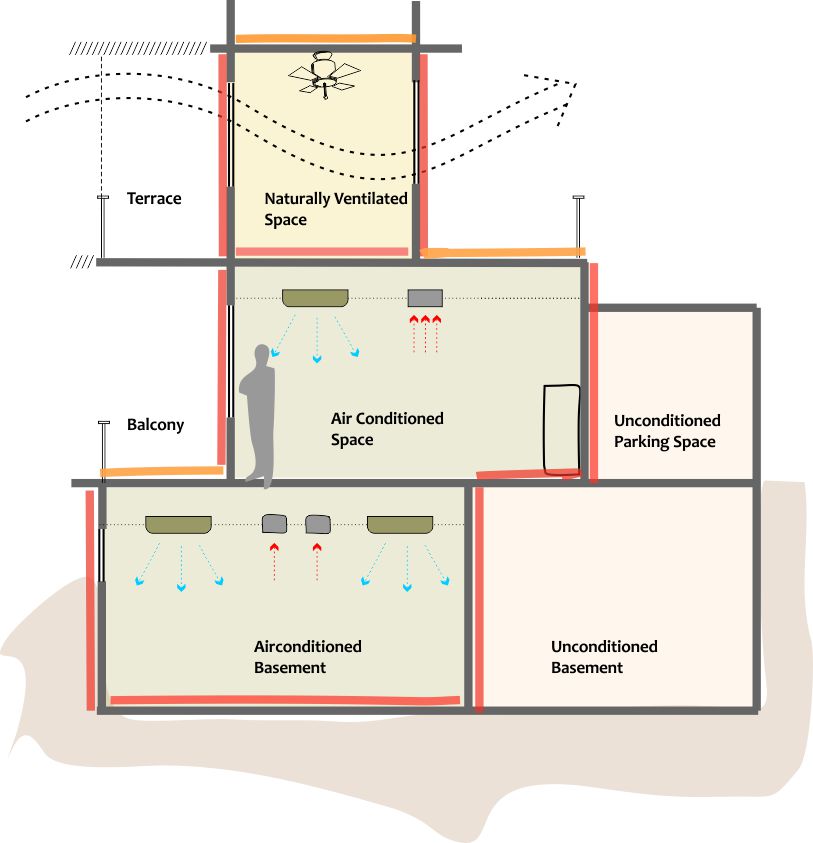Thermal insulation in walls and roofs reduces heat transfer between the inside and outside and helps maintain comfortable indoor temperature. It provides healthier environment, adds sound control, and most important lowers the electricity bills. Insulation helps keep indoor space cooler in summer months and warm during winters.
There are variety of materials to choose from including fibre glass, mineral wool, rock wool, expanded or extruded polystyrene, cellulose, urethane or phenolic foam boards and cotton. They are generally in the form of amorphous wool or rigid sheets, or require in‐situ pouring. Insulation is rated in terms of R‐value. Higher R‐values denote better insulation and translate into more energy savings, much needed to meet NZEB design goals.


















